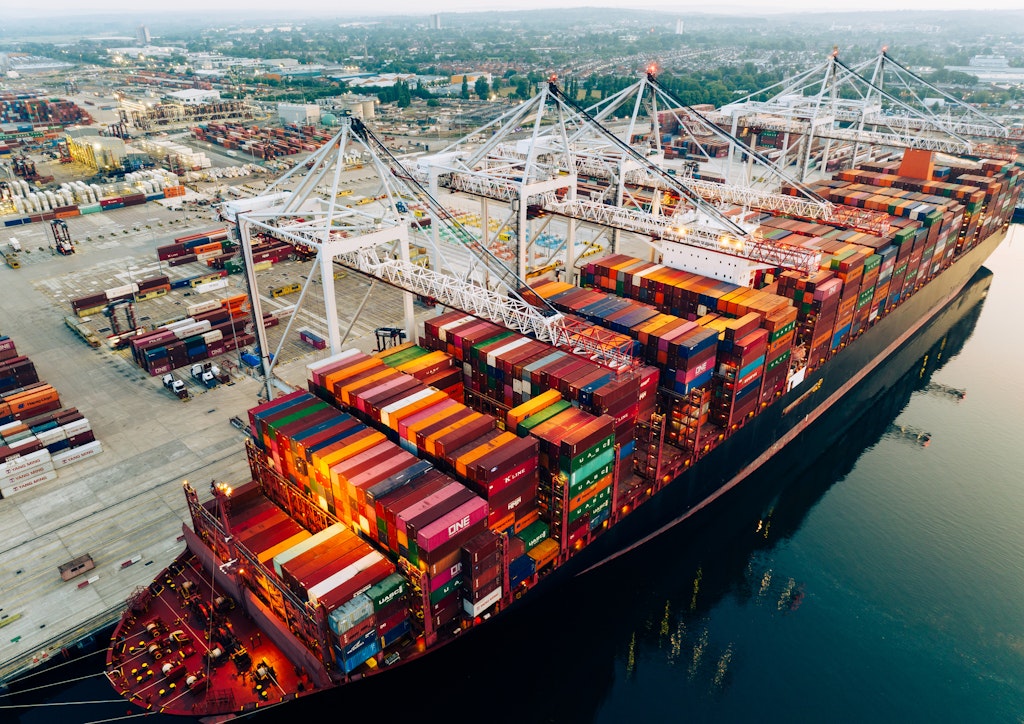The sorcerer of speed
Stirling Moss performed almost supernaturally
This article is taken from the June 2023 issue of The Critic. To get the full magazine why not subscribe? Right now we’re offering five issues for just £10.
If you find yourself between Brescia and Rome in mid-June, you may come across a fleet of achingly beautiful classic cars haring along equally beautiful roads. The 1,000-mile Mille Miglia is now a five-day rally more about fun than competition: but back in the day it was a brutal non-stop race, and in 1955 it witnessed perhaps the greatest single performance in motorsport history.
The roads were closed, but they were still unprepared public carriageways rather than racetracks, and spectators in their hordes crowded as close as they dared. Drivers didn’t wear restraints — it was safer to be thrown clear in a crash, though “safer” was very much a relative term — and many preferred not to carry a navigator, wanting to be responsible only for their own safety rather than someone else’s too.
Stirling Moss thought otherwise
Stirling Moss thought otherwise. The Italian drivers might have known the roads well, but he didn’t. He needed a navigator, and in Denis Jenkinson he found the perfect one. They were an odd couple: Moss a daring and handsome 25-year-old cavalier; Jenkinson bespectacled, bearded and nine years older. They were the insurgents, two Englishmen in a Mercedes taking on Ferrari and Maserati in their own backyard.
Jenkinson wrote notes on a 15-foot length of paper, Kerouac-style, which he put on rollers and threaded through a box with a Perspex window. They divided corners into three categories — saucy, dodgy and dangerous — and worked out hand signals for each of them. They had, and needed, total trust in each other, for one slip from either could kill them both.
Their 300 SLR is number 722, for their start time: 7.22 am. Off they go on a bright and warm morning, through Brescia and out onto the open road. 170mph on the long straights, Moss in total control of the car: sitting back, relaxed, totally in the zone where man and machine become one.
Into Padova at 150mph. Moss brakes insanely late into a corner, but Jenkinson is so fascinated by “watching Moss working away to keep control, so intrigued to follow his every action and live every inch of the way with him” that he quite forgets to be scared. Moss deliberately bounces off the safety hay bales to get the perfect angle for the exit, and Jenkinson gives “a little handclap of appreciation for showing just how a really great driver acts in a difficult situation”.
Alongside the Po and on the road to Ravenna, the gravel run-offs full of cars lying battered and bent where they’d mistaken a dodgy corner for a saucy one. Into and out of Ravenna, well ahead of record pace and hunting down a couple of Ferraris ahead. Now the combination of G-forces, gearbox heat, engine fumes and brake odour proves too much for Jenkinson. He leans over the side and lets the slipstream take his breakfast, but the wind snatches his glasses too. Moss shoots him a look of alarm: Jenkinson’s blind as a bat without them. Jenkinson reaches into his breast pocket and fishes out a spare pair. Moss grins.
The Adriatic on their left, deep calm and deeper blue as the Mercedes continues to thunder out its sound and fury. Flat out over a humpback bridge and airborne for long, long seconds. Up into the mountains, Moss sliding round the hairpins with exquisite skill and balance. A car’s limits are not static things: they depend on the limits of the driver, and for Moss these are further out than for almost anyone else. Time and again he breaks traction so he can pivot round a corner using only steering wheel and throttle control: a shaman, a sorcerer, making the machine dance and sing beneath him.
… he has long wanted to do the impossible
Cypress trees and vineyards as the Tuscan hills fall and rise all around. 120mph through the centre of Florence and into the control point. Next up are the Apennines, the Futa and Raticosa passes, and Moss’s face is equal measures anticipation and determination: he has long wanted to do the impossible and make it from Florence to Bologna in under an hour.
Melted tar and oil all over the road in places, forcing even Moss to back off, but for Jenkinson this is now less a race than a session of hypnosis, riding shotgun for an otherworldly talent. Up and over Raticosa and sliding down the other side, past a “Viva Maserati!” sign at which both men spontaneously flick a V-sign and then giggle to themselves like schoolboys.
Into Bologna. An hour and one minute between the checkpoints: maybe Moss’s only concession to mortality. On the long fast straights through Modena and Reggio Emilia, overtaking the camera planes flying above and filming their progress. It’s late afternoon now but Moss is still driving as though they’ve only just begun, and he takes the final corner before the finish line in a power slide joyous with the thrill of being him, being so skilled, being so alive.
Those 1,000 miles had taken 10 hours, seven minutes and 48 seconds, breaking the previous record by more than an hour. Moss and Jenkinson had averaged almost 98mph on 1950s roads in a 1950s car. Their car, 722, is in the Mercedes museum in Stuttgart, and may be the most valuable car in the world. If Mercedes ever sell it, which they won’t, estimates of its value start at £30m and end — well, who knows where? For in truth the car is priceless, just like the talent of the man who drove it so wonderfully.
Enjoying The Critic online? It's even better in print
Try five issues of Britain’s most civilised magazine for £10
Subscribe














